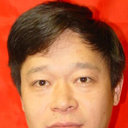Soyasaponins prevent H₂O₂-induced inhibition of gap junctional intercellular communication by scavenging reactive oxygen species in rat liver cells.
Keywords
Abstract
It appears to be more practical and effective to prevent carcinogenesis by targeting the tumor promotion stage. Gap junctional intercellular communication (GJIC) is strongly involved in carcinogenesis, especially the tumor promotion stage. Considerable interest has been focused on the chemoprevention activities of soyasaponin (SS), which are major phytochemicals found in soybeans and soy products. However, less is known about the preventive effects of SS (especially SS with different chemical structures) against tumor promoter-induced inhibition of GJIC. We investigated the protective effects of SS-A1, SS-A2, and SS-I against hydrogen peroxide (H2O2)-induced GJIC inhibition and reactive oxygen species (ROS) production in Buffalo rat liver (BRL) cells. The present results clearly show for the first time that SS-A1, SS-A2, and SS-I prevent the H2O2-induced GJIC inhibition by scavenging ROS in BRL cells in a dose-dependent manner at the concentration range of from 25 to 100 μg/mL. Soyasaponins attenuated the H2O2-induced ROS through potentiating the activities of superoxide dismutase and glutathione peroxidase. This may be an important mechanism by which SS protects against tumor promotion. In addition, various chemical structures of SS appear to exhibit different protective abilities against GJIC inhibition. This may partly attribute to their differences in ROS-scavenging activities.


